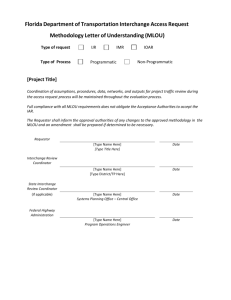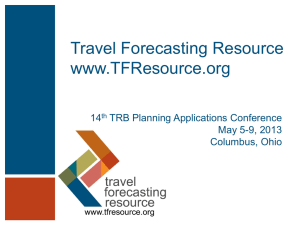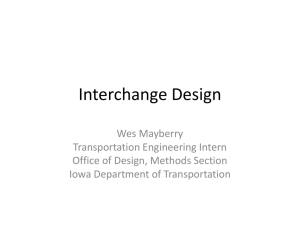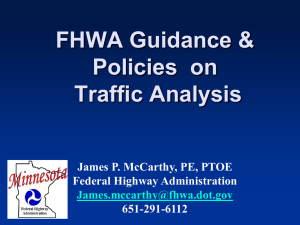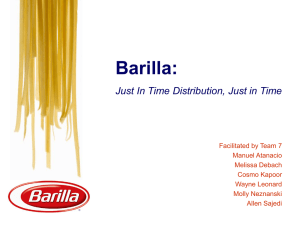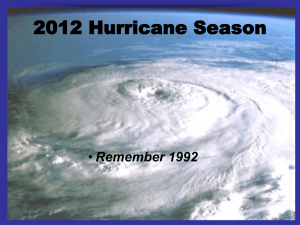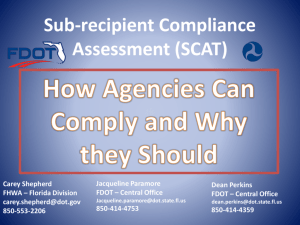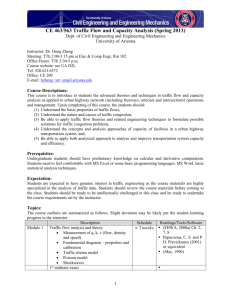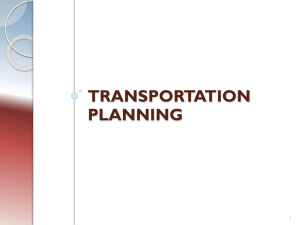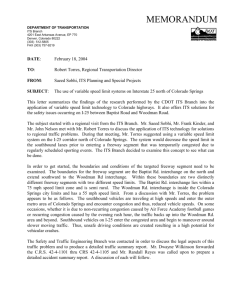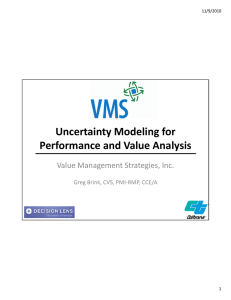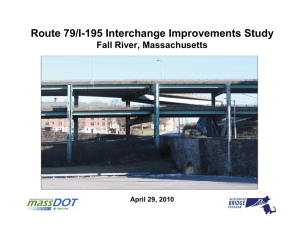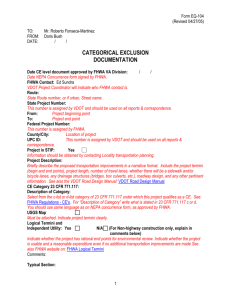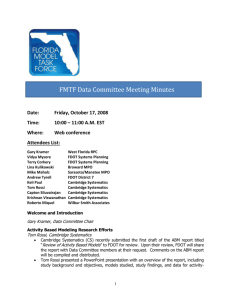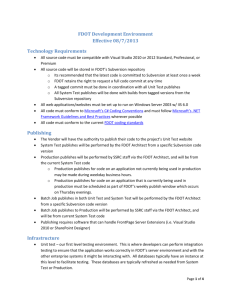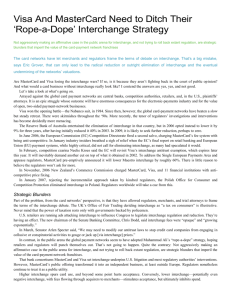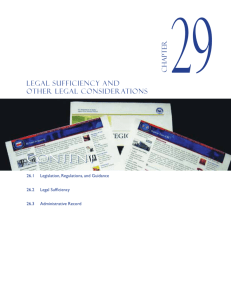Methodology Letter of Understanding (MLOU)
advertisement
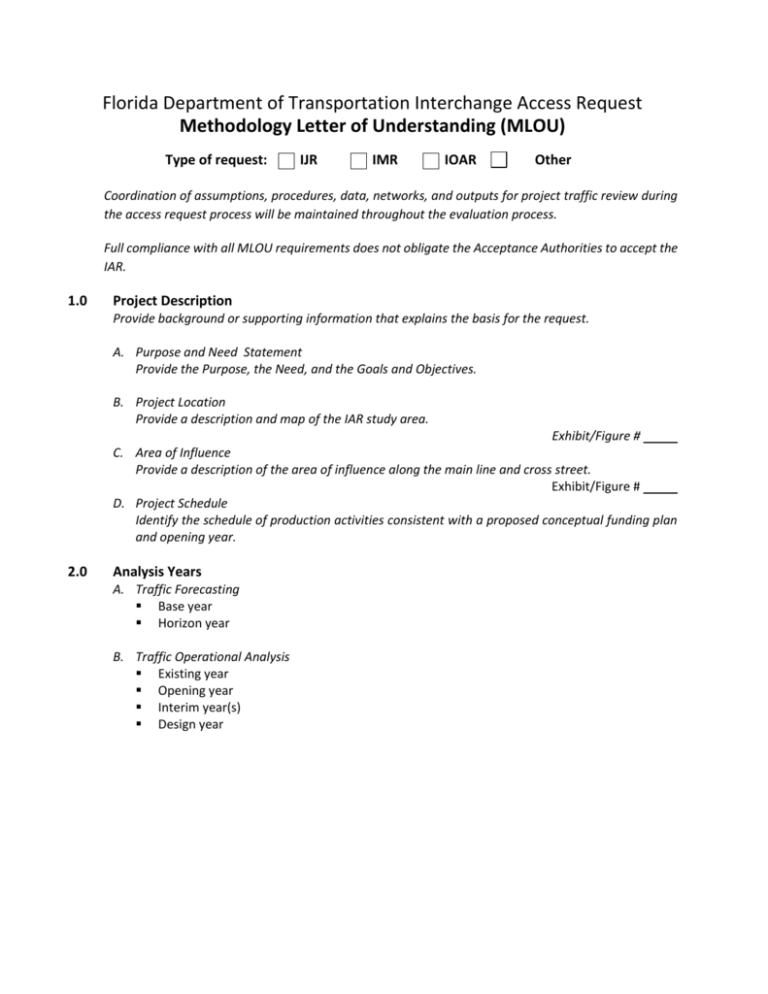
Florida Department of Transportation Interchange Access Request Methodology Letter of Understanding (MLOU) Type of request: IJR IMR IOAR Other Coordination of assumptions, procedures, data, networks, and outputs for project traffic review during the access request process will be maintained throughout the evaluation process. Full compliance with all MLOU requirements does not obligate the Acceptance Authorities to accept the IAR. 1.0 Project Description Provide background or supporting information that explains the basis for the request. A. Purpose and Need Statement Provide the Purpose, the Need, and the Goals and Objectives. B. Project Location Provide a description and map of the IAR study area. Exhibit/Figure # C. Area of Influence Provide a description of the area of influence along the main line and cross street. Exhibit/Figure # D. Project Schedule Identify the schedule of production activities consistent with a proposed conceptual funding plan and opening year. 2.0 Analysis Years A. Traffic Forecasting Base year Horizon year B. Traffic Operational Analysis Existing year Opening year Interim year(s) Design year 3.0 Alternatives Alternatives Existing Year of Analysis Opening Interim Design Build No Build Preferred Alternative Other Alternatives A. Requester has developed specific alternative(s) at this point and the alternative(s) are described below. Exhibit/Figure # B. Build alternatives that were eliminated from consideration or evaluated under prior studies and discarded will be documented as to why they were not carried forward. 4.0 Data Collection The type of data that may be used should be identified. A. Transportation System Data B. Existing and Historical Traffic Data C. Land Use Data D. Environmental Data E. Planned and Programmed Projects 5.0 Travel Demand Forecasting A. Selected Travel Demand Model(s) B. Project Traffic Forecast Development Methodology Describe the methodology and assumptions in developing the future year traffic volumes (AADT and DDHV) C. Validation Methodology Describe the methodology using current FDOT procedures in data collection procedure Identify how modifications to the travel demand forecasting model will be made, including modifications to the facility type and area type for links, modifications to socio-economic data and all input and output modeling files for review. D. Adjustment Procedures Identify the process used to adjust modeled future year traffic to the defined analysis years. Discuss how trends/growth-rates will be factored into this. E. Traffic Factors Utilizing recommended ranges identified in the Project Traffic Forecasting Handbook and Procedure (525-030-120). Utilizing other factors, identified below Roadway K D T Tf PHF MOCF PHF Source: 6.0 Traffic Operational Analysis The area type, traffic conditions, and analysis tools to be used are summarized in this section. A. Existing Area Type/Traffic Conditions Area Type Conditions Under-saturated Saturated Rural Urban Areas/Transitioning Urbanized Areas Urbanized Areas/Central Business District (CBD) B. Traffic Analysis Software Used Software System Component Freeways Name LOSPLAN HCS/HCM Synchro SimTraffic Corsim Vissim Other Version Basic Segment Weaving Cross Road Ramp Ramp Merge Diverge Arterials Intersections C. Calibration Calibration methodology and parameters utilized will be documented. Any deviations will be justified. D. Selection of Measures of Effectiveness (MOE) The Level of Service criteria for each roadway classification, including mainline, ramps, ramp terminal intersections and the cross road beyond the interchange ramp terminal intersections are identified below. In addition to the Level of Service criteria, state other operational criteria to be utilized for the evaluation of alternatives. 7.0 Safety Analysis A. Detailed crash data within the study area will be analyzed and documented. Years: Source: B. Additional safety analysis tools or procedure may be used to analyze the safety performance as outlined below. 8.0 Consistency with Other Plans/Projects A. The request will be reviewed for consistency with facility Master Plans, Actions Plans, SIS Plan, MPO Long Range Transportation Plans, Local Government Comprehensive Plans or development applications, etc. B. Where the request is inconsistent with any plan, steps to bring the plan into consistency will be developed. C. The operational relationship of this request to the other interchanges will be reviewed and documented. The following other IARs are located within the area of influence. 9.0 Environmental Considerations A. Status of Environmental Approval and permitting process. B. Identify the environmental considerations that could influence the outcome of the alternative development and selection process. 10.0 Coordination Yes No N/A An appropriate effort of coordination will be made with appropriate proposed developments in the area. Request will identify and include (if applicable) a commitment to complete the other non-interchange/non-intersection improvements that are necessary for the interchange/intersection to function as proposed. Request will document whether the project requires financial or infrastructure commitments from other agencies, organizations, or private entities. Request will document any pre-condition contingencies required in regards to the timing of other improvements and their inclusion in a TIP/STIP/LRTP prior to the Interstate access acceptance (final approval of NEPA document). Request will document the funding and phasing. 11.0 Anticipated Design Exceptions and Variations Design exceptions/variations are not anticipated, but if an exception/variation should arise it will be processed per FHWA and FDOT standards. The following exceptions/variations to FDOT, AASHTO or FHWA rules, policies, standards, criteria or procedures have been identified: 12.0 Conceptual Signing Plan A conceptual signing and marking plan shall be prepared and included. 13.0 Access Management Plan An access management plan may be developed within the area of influence to complement the improvements to the interchange. 14.0 FHWA Policy Points The FHWA 8 Policy Points will be addressed within the request.
